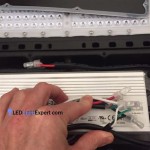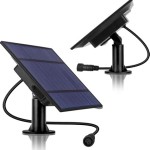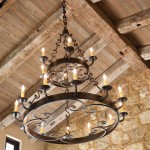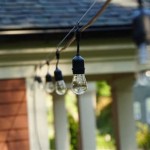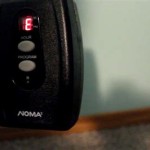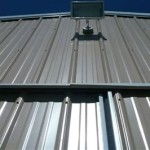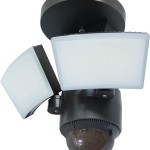Outdoor Moving Head Light Covers: Protecting Your Investment
Outdoor moving head lights represent a significant investment for event production companies, theaters, architectural installations, and a variety of other applications that require dynamic and visually impactful lighting. These sophisticated fixtures are exposed to the elements, facing a constant barrage of threats from harsh weather conditions, dust, debris, and even bird droppings. Consequently, the use of outdoor moving head light covers becomes crucial for preserving the functionality, extending the lifespan, and maintaining the visual appeal of these valuable lighting instruments. This article will explore the critical functions and benefits of employing protective covers for outdoor moving head lights, the different types of covers available, key selection considerations, and proper usage techniques.
Moving head lights are complex electromechanical devices, incorporating intricate electronics, precision optics, and motorized components. Environmental exposure can compromise these delicate systems, leading to performance degradation, costly repairs, and premature failure. Water ingress, for example, can short-circuit electrical components, corrode metallic parts, and damage sensitive optical lenses. Similarly, dust and debris can accumulate on internal mechanisms, impeding movement, reducing light output, and increasing the risk of overheating. The sun's ultraviolet (UV) radiation can also degrade plastic components, causing them to become brittle and discolored. Bird droppings, while seemingly innocuous, can be highly corrosive and damage the fixture's finish and internal parts. The use of properly designed and maintained protective covers mitigates these risks, ensuring the lights operate reliably and maintain their optimal performance.
Safeguarding Against Environmental Damage
The primary function of an outdoor moving head light cover is to act as a barrier against environmental elements that can damage the fixture. This protection encompasses several key aspects. Weather resistance is paramount, requiring covers to be constructed from waterproof or water-resistant materials that prevent rain, snow, and sleet from penetrating the fixture's internal components. The seams and closures of the cover should also be sealed to prevent water from seeping in through gaps or openings. UV resistance is another vital consideration, especially for fixtures installed in locations with prolonged sun exposure. UV-resistant materials prevent the cover itself from degrading and protect the underlying fixture from the damaging effects of UV radiation. Dust and debris protection is achieved through tight-fitting designs and closures that minimize the entry of airborne particles. Some covers may even incorporate filter systems to further enhance dust removal.
Beyond physical protection, covers also contribute to thermal management. While it might seem counterintuitive, a well-designed cover can help regulate the temperature of the fixture. During periods of direct sunlight, a reflective or light-colored cover can reduce heat absorption, preventing the fixture from overheating. Conversely, in cold climates, an insulated cover can help retain heat generated by the fixture, preventing condensation and ensuring proper operation at low temperatures. The specific thermal properties of the cover should be carefully considered based on the climate and environmental conditions in which the lights are being used.
The physical integrity of the fixture is also safeguarded by the cover. Impacts from falling objects, such as tree branches or hail, can damage the housing, lenses, or internal components of the light. A robust cover made from durable material provides a degree of impact resistance, minimizing the risk of damage from such incidents. Vandalism is another concern in some locations, and a cover can act as a deterrent, making it more difficult for vandals to access and damage the fixture. Covers can also help to obscure the fixture from view, making it less attractive as a target for theft or vandalism.
Extending Fixture Lifespan and Reducing Maintenance Costs
The protective benefits of outdoor moving head light covers directly translate into an extended lifespan for the fixture and a reduction in maintenance costs. By preventing environmental damage, covers minimize the need for repairs and replacements. Water damage, corrosion, and dust accumulation are common causes of failure in outdoor lighting fixtures. By mitigating these risks, covers reduce the frequency of breakdowns and the associated expenses of labor, parts, and downtime.
Regular maintenance is essential for ensuring the optimal performance of moving head lights. This typically involves cleaning lenses, lubricating moving parts, and inspecting electrical connections. However, by using protective covers, the frequency of these maintenance tasks can be reduced. The cover keeps the fixture cleaner and more protected, minimizing the accumulation of dirt, dust, and debris. This not only reduces the time and effort required for maintenance but also lessens the risk of damage during the cleaning process. Furthermore, the cover shields the fixture from harsh chemicals and cleaning agents, preventing damage to the finish or internal components.
The long-term cost savings associated with using outdoor moving head light covers can be substantial. The initial investment in covers is typically a small fraction of the cost of the lighting fixtures themselves. However, the savings in repair costs, replacement costs, and maintenance expenses over the lifespan of the fixture can far outweigh the initial investment. In addition to financial benefits, covers also contribute to operational efficiency by reducing downtime and ensuring that the lights are always ready to perform when needed. This is particularly important for events and productions where lighting is a critical element of the overall experience.
Types of Outdoor Moving Head Light Covers and Selection Criteria
A variety of outdoor moving head light covers are available on the market, each designed to meet specific needs and applications. These covers vary in materials, designs, and features, and it is essential to select the appropriate cover based on the specific requirements of the lighting fixture and the environment in which it will be used. The most common types of covers include:
Waterproof Covers: These covers are designed to provide maximum protection against water ingress. They are typically made from waterproof fabrics such as PVC-coated polyester or nylon, and feature sealed seams and watertight closures. Waterproof covers are ideal for use in areas with heavy rainfall, snow, or exposure to splashing water.
Breathable Covers: While waterproof covers offer excellent protection against water, they can also trap moisture inside the cover, leading to condensation and potential damage to the fixture. Breathable covers, on the other hand, allow moisture to escape while still providing protection against rain and dust. These covers are typically made from breathable fabrics such as Gore-Tex or similar materials. Breathable covers are suitable for use in climates with high humidity or where condensation is a concern.
Insulated Covers: These covers provide thermal insulation, helping to regulate the temperature of the fixture in both hot and cold weather. They are typically made from insulated materials such as foam or quilted fabric. Insulated covers are ideal for use in extreme climates where temperature fluctuations can affect the performance of the fixture.
Custom-Fitted Covers: These covers are designed to fit specific models of moving head lights, providing a snug and secure fit. Custom-fitted covers offer the best protection against environmental elements and are recommended for high-value fixtures or those used in demanding environments.
Universal Covers: These covers are designed to fit a range of moving head light models. While they may not provide the same level of protection as custom-fitted covers, they offer a more affordable and versatile option.
When selecting an outdoor moving head light cover, several key criteria should be considered. The material should be durable, weather-resistant, and UV-resistant. The fit should be snug and secure, preventing water and dust from entering the cover. The cover should be easy to install and remove, allowing for convenient maintenance and operation. The design should be appropriate for the specific environment in which the lights will be used, considering factors such as rainfall, temperature, humidity, and sun exposure. Finally, the cost of the cover should be weighed against the value of the lighting fixture and the potential savings in repair and maintenance costs.
Proper usage is critical for maximizing the benefits of outdoor moving head light covers. Covers should be installed correctly, ensuring a tight and secure fit. Regular inspections should be conducted to check for damage or wear, and damaged covers should be repaired or replaced promptly. Covers should be cleaned regularly to remove dirt, dust, and debris. When not in use, covers should be stored in a clean and dry place to prevent damage. Following these guidelines will help ensure that the covers provide optimal protection for the lighting fixtures and contribute to their long-term performance.

Outdoor Moving Head Light Rain Cover Led Stage China And Protection Made In Com

Dome Rain Cover For Moving Head Light All Day Used Outdoor Colorfullighting

Outdoor Moving Head Light Rain Cover Led Stage China And Protection Made In Com

Dome Rain Cover For Moving Head Light All Day Used Outdoor Colorfullighting

Outdoor Moving Head Light Rain Cover Led Stage China And Protection Made In Com

Inflatable Rain Cover For Moving Head Light Outdoor Activity China And Made In Com

Dome Rain Cover For Moving Head Light All Day Used Outdoor Colorfullighting

20x Beam Moving Head Light Waterproof Rain Cover Shelter Outdoor Show Event Dj For

The Lightdome 575s Moving Light Weatherproof Dome From China

Black Outdoor Disco Waterproof Led Stage Lighting Moving Head Light Rain Cover A
Related Posts
